An accurate and reliable time display is essential for many amateur radio applications, for example when operating FT8 or JS8 and other digital modes. But we also benefit from a reliable and accurate time display in classic voice radio QSOs, in contests or when making a handwritten QSO. However, inexpensive digital clocks showed some weaknesses in my shack: They ran inaccurately, lost the current time after every power failure and did not offer an automatic summer/winter time changeover.
The solution: Ulanzi TC001 Pixelclock with Awtrix
To get around these problems, I purchased two “Ulanzi TC001 Pixelclock” and loaded them with the alternative Awtrix firmware. The “Ulanzi TC001” is available for around €50 from various online retailers.
Installing the Awtrix firmware on the Ulanzi clock is simple and can be done directly in the browser. The clock is connected to the computer via USB. Then visit the Awtrix project website (https://blueforcer.github.io), where the firmware can be written directly to the clock in the browser (Chrome or Edge). This enables installation without complicated software or command line commands.
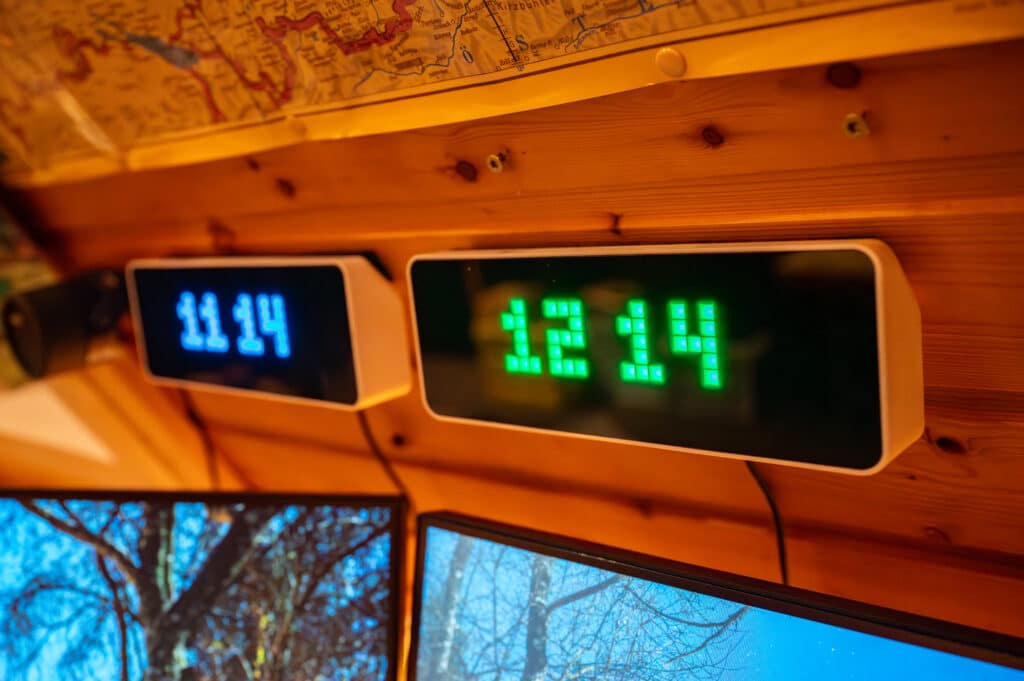
The clock is then configured conveniently via the Awtrix web interface, which can be accessed via port 80 after connecting to the WLAN network. The IP address of the clock is shown on the display every time it is started. I can then configure the watch according to my preferences in the browser.
A key advantage of the Awtrix firmware is the connection to a so-called NTP server (Network Time Protocol), so that the time is always synchronized. Once configured, there are no more deviations or problems after power failures. The automatic summer time changeover is also supported. When I switch on the main switch in the shack, the clocks start up and retrieve the current time from the Internet.
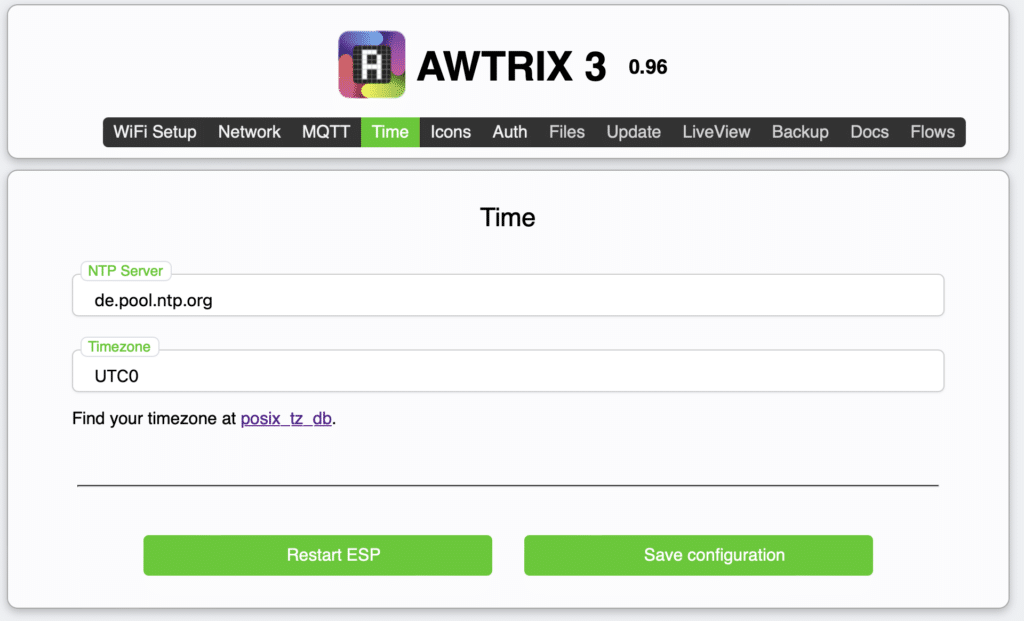
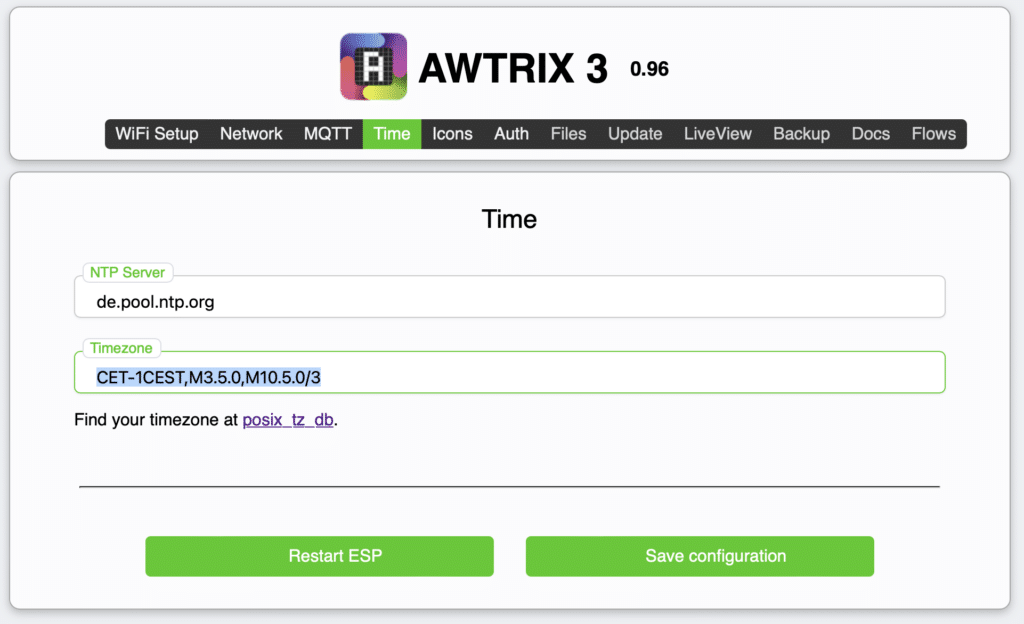
Dual display: local time and UTC
I have two of these clocks in use in my shack: one shows the local time including the summer/winter time changeover, the other is permanently set to UTC. Both clocks hang above my workstation and are always clearly visible. To avoid confusion, I have configured the colors for UTC and local time differently in the web interface.
Extended application possibilities
For technically savvy users, Awtrix offers the option of showing external data on the displays via ioBroker or MQTT. In addition to the time, I can also display the current production of my PV system and the outside temperature on my local time clock – practical information for everyday shack life and for QSOs.
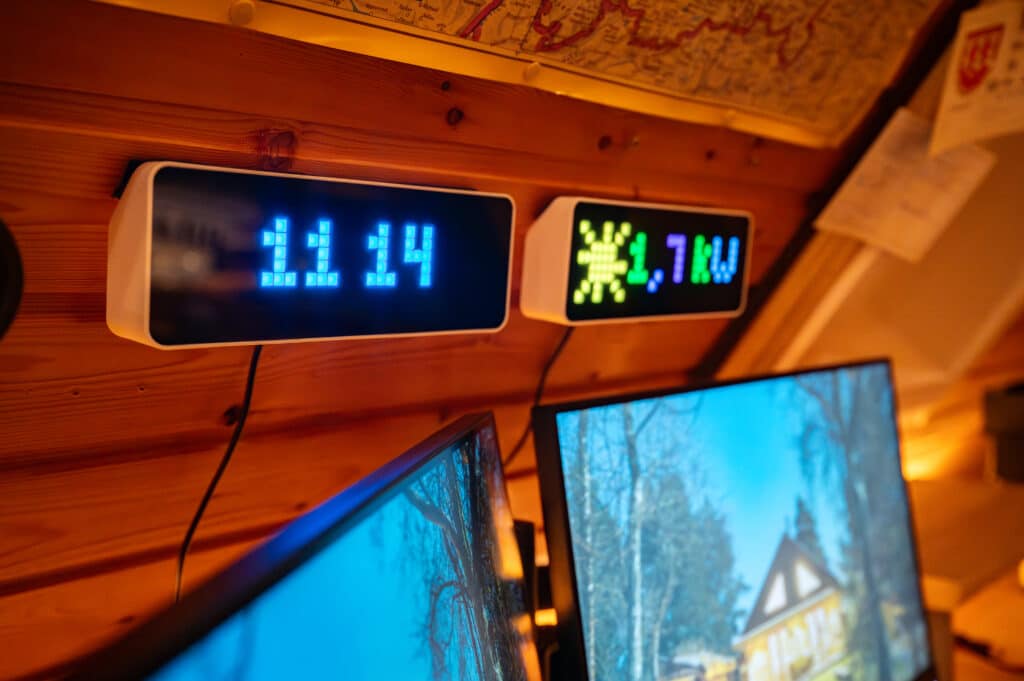
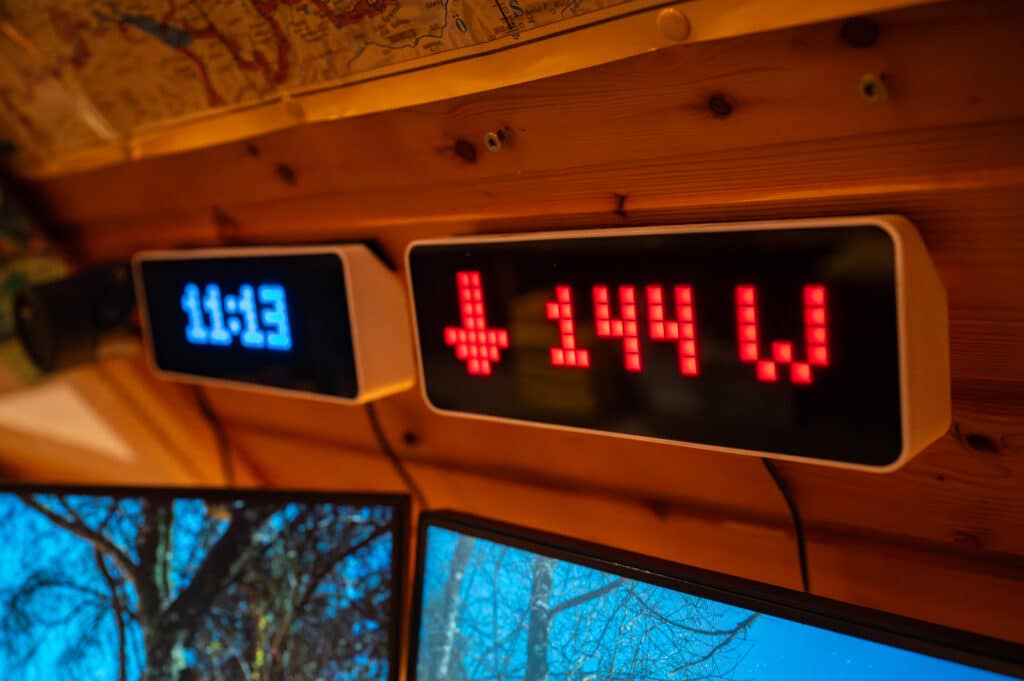
In the meantime, I have also implemented a connection between the Awtrix pixel clock and the logging program “Wavelog”. A corresponding documentation of the follow-up project can be found here.